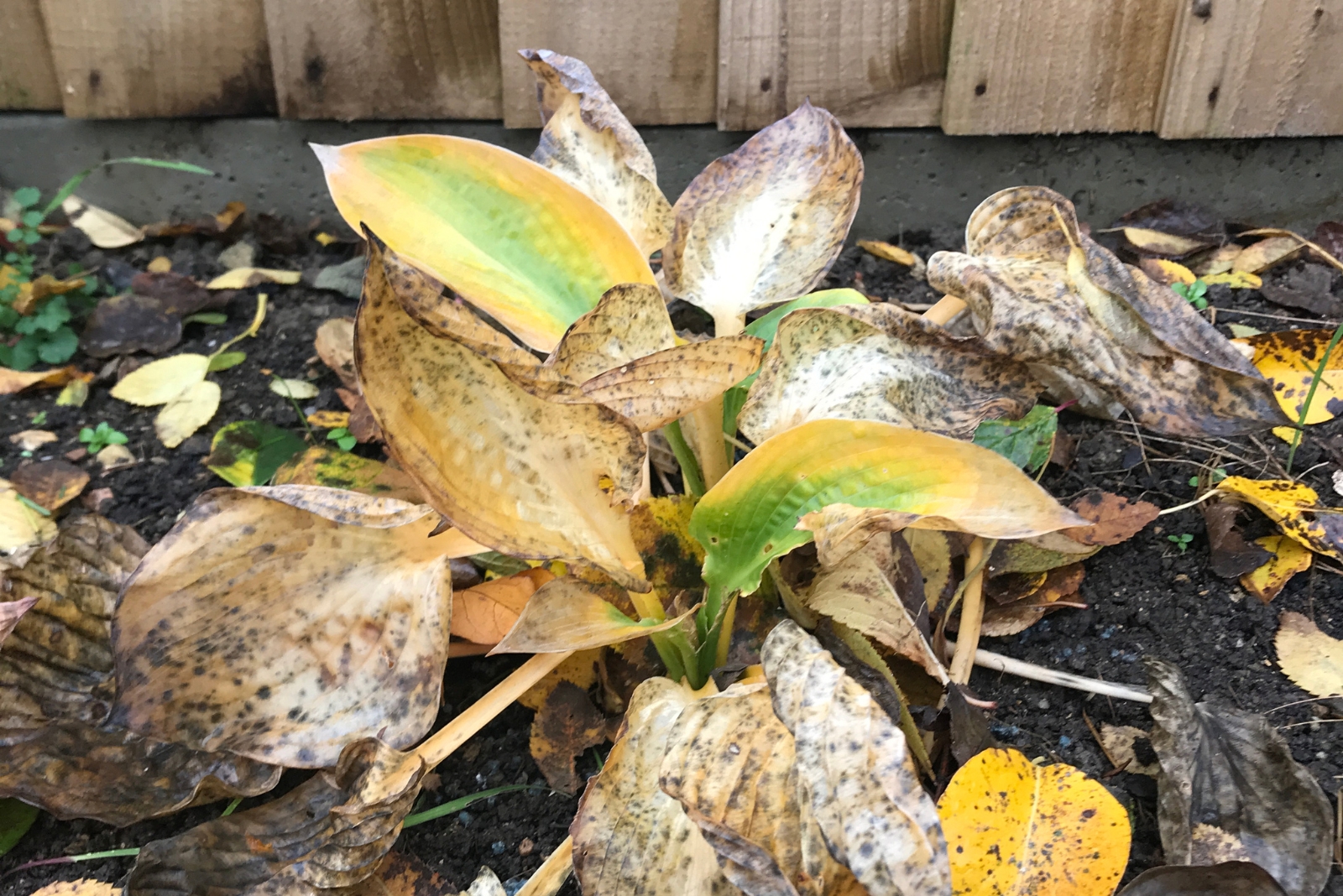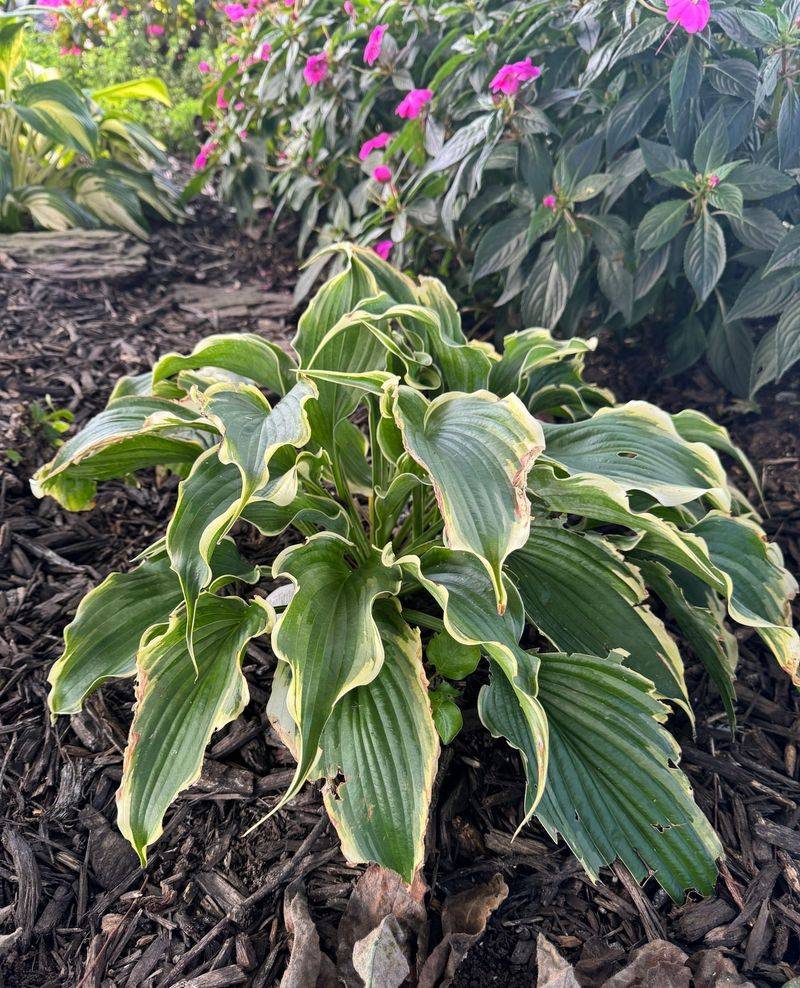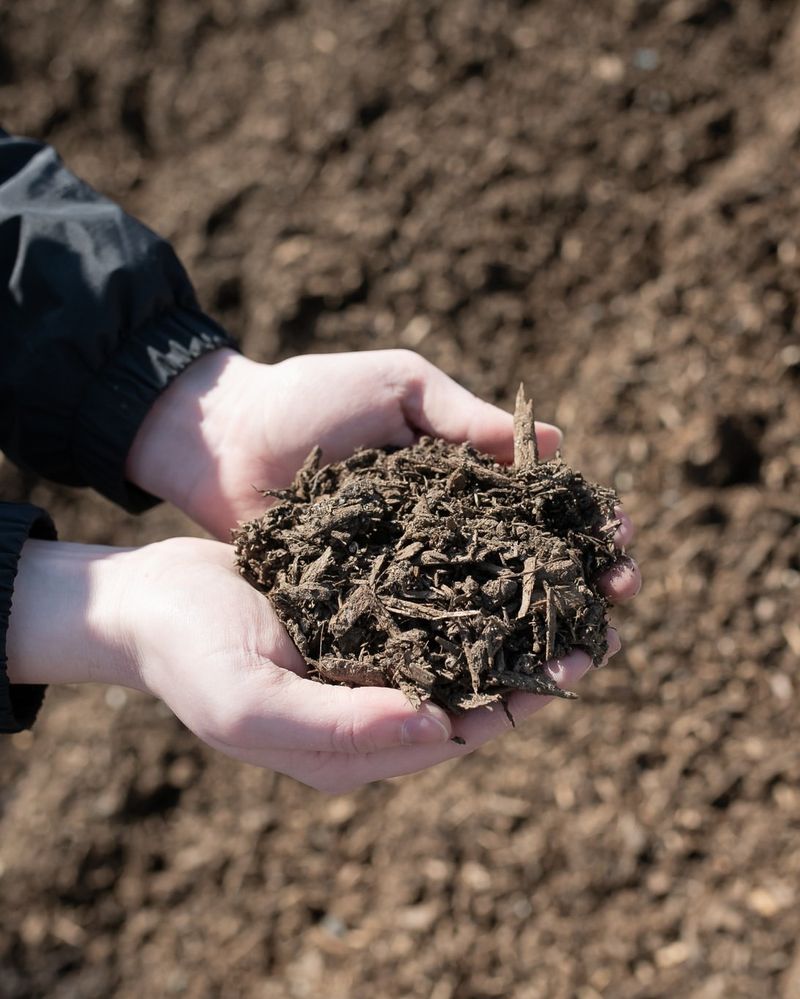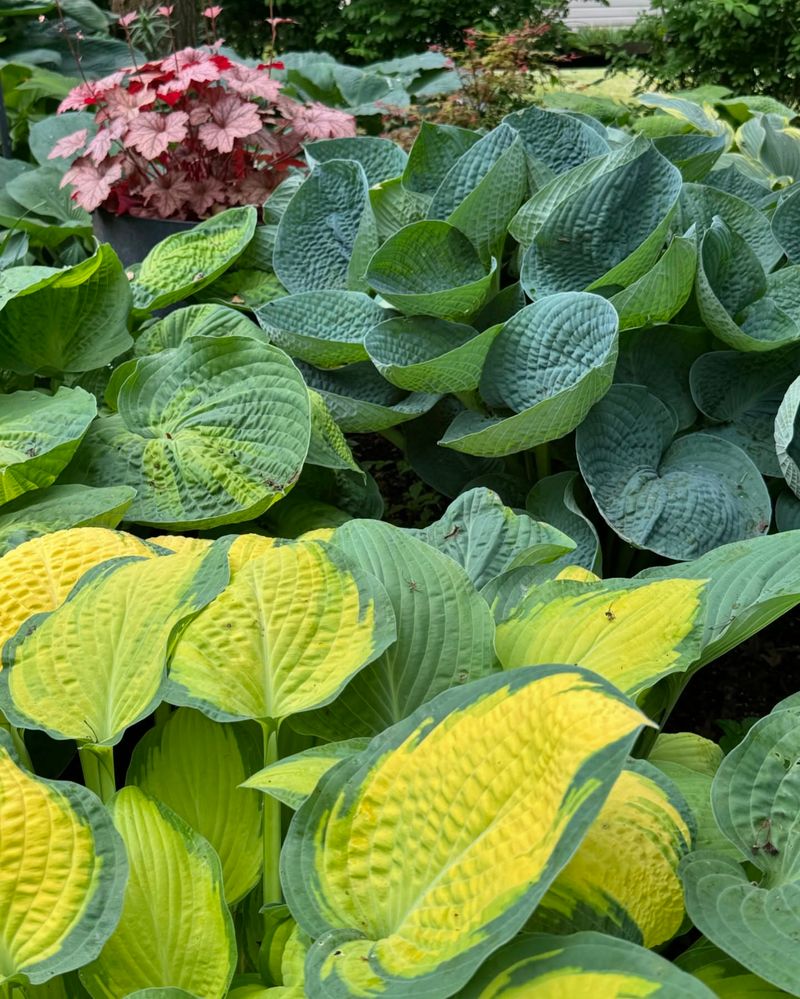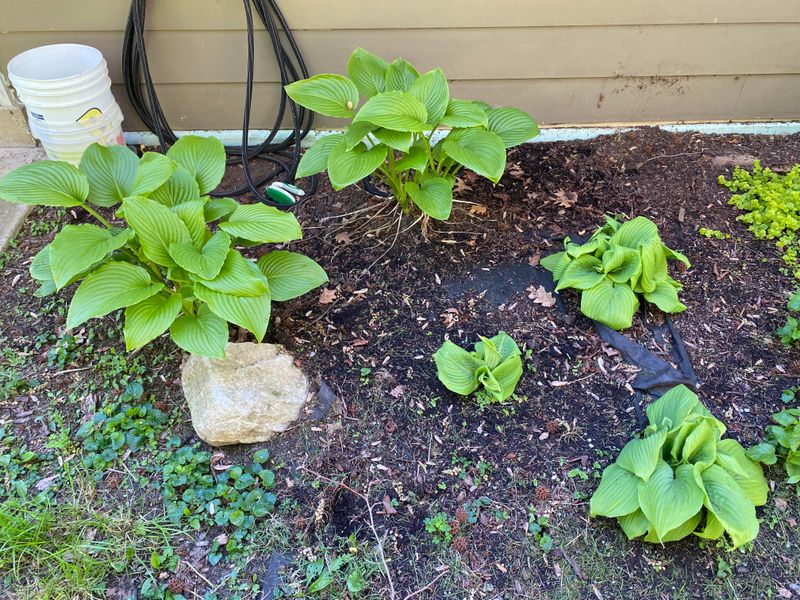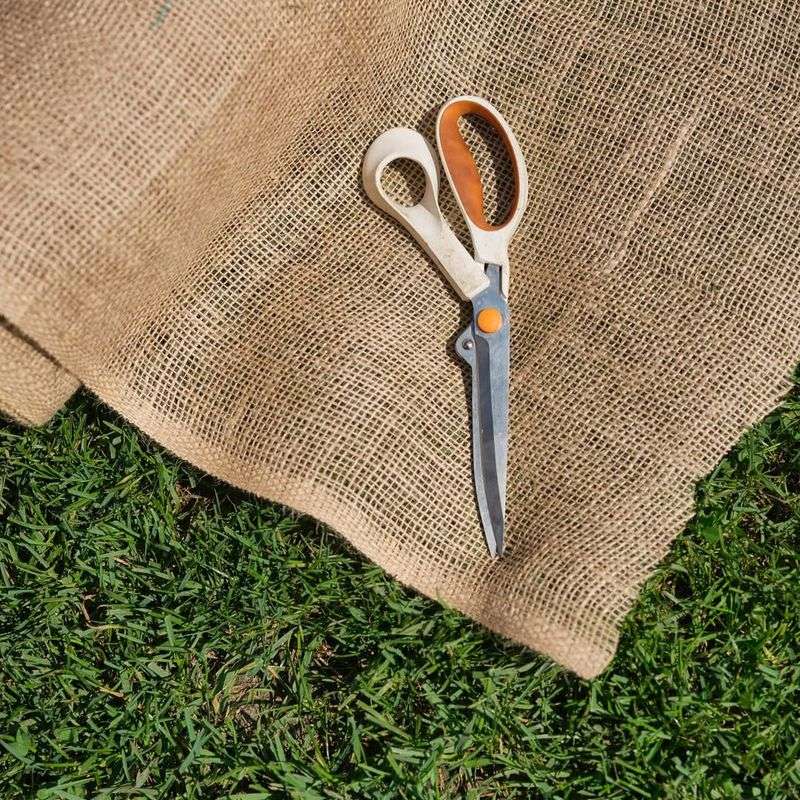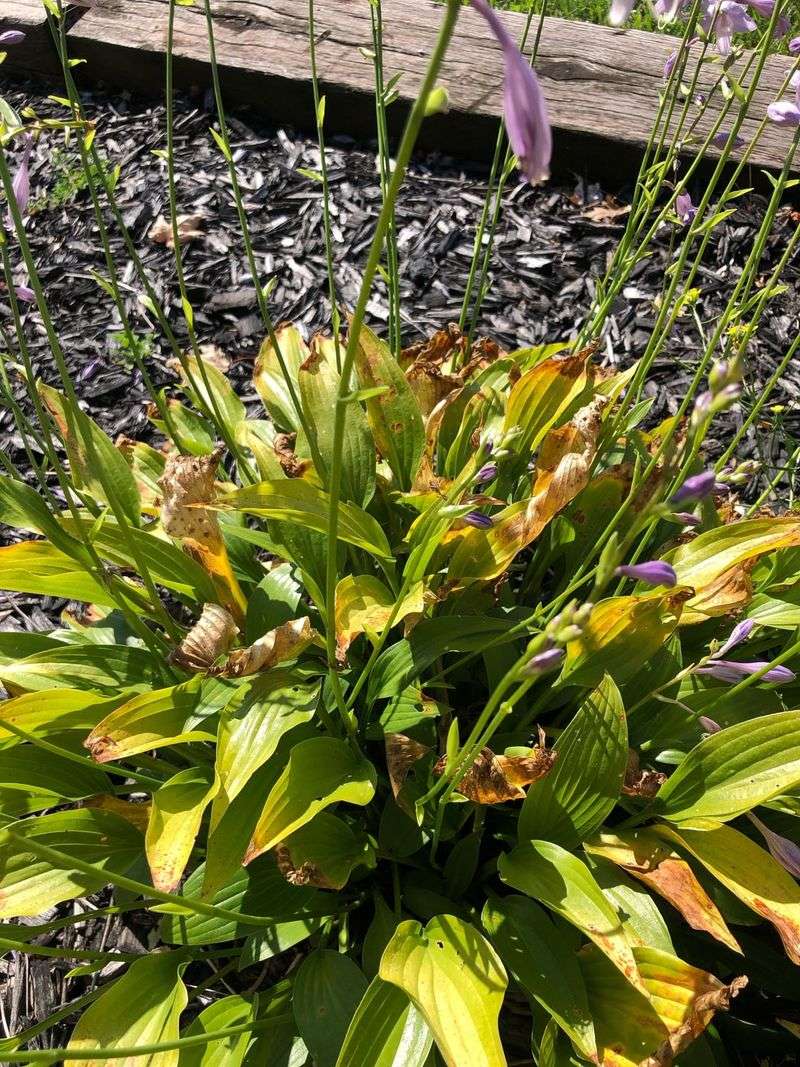Hostas are some of the most popular plants in Ohio gardens, loved for their beautiful leaves and shade-loving nature. But when winter arrives with freezing temperatures and snow, these perennials need special care to survive until spring.
Taking a few simple steps in fall can make all the difference between healthy hostas and damaged plants next year.
1. Cut Back Dead Foliage After First Frost
Once the first hard frost hits Ohio, your hosta leaves will turn brown and mushy. Wait until this happens before cutting them back to ground level with clean garden shears.
Removing dead foliage prevents diseases from hiding in decaying leaves over winter. It also stops pests like slugs from finding cozy spots to overwinter near your plants.
Make sure you clean up all the plant debris around the base too.
2. Add A Thick Layer Of Mulch
Mulch acts like a warm blanket for your hosta roots during Ohio’s cold winters. Spread about three to four inches of organic mulch like shredded leaves, straw, or wood chips around each plant.
Wait until the ground starts to freeze before applying mulch. Adding it too early can attract rodents looking for warm homes.
Good mulch keeps soil temperatures steady and prevents damaging freeze-thaw cycles.
3. Water Plants Thoroughly Before Ground Freezes
Hydrated plants survive winter better than thirsty ones. Give your hostas a deep watering session in late fall before the ground freezes solid.
Well-watered roots are less likely to suffer winter damage because moist soil holds heat better than dry soil. Aim to water deeply so moisture reaches at least six inches down.
Stop watering once the ground begins to freeze to avoid ice formation around roots.
4. Divide Overcrowded Clumps In Early Fall
Crowded hostas compete for nutrients and may struggle through harsh Ohio winters. Early fall, around September, is the perfect time to divide large clumps into smaller sections.
Each division should have at least three or four shoots with healthy roots attached. Replant them with proper spacing so each plant can establish strong roots before winter arrives.
Stronger individual plants handle cold weather much better than cramped ones.
5. Protect From Harsh Winter Winds
Ohio winters bring bitter winds that can damage hosta crowns and dry out the soil. If your hostas grow in exposed areas, consider adding windbreaks like burlap screens or temporary fencing.
You can also plant hostas near shrubs or buildings that naturally block strong gusts. Wind protection reduces moisture loss from soil and prevents crown damage.
Even dormant plants benefit from shelter against relentless winter winds.
6. Avoid Walking On Frozen Garden Beds
Stepping on frozen soil compacts it and can crush delicate hosta crowns hiding just below the surface. Even though you cannot see them, the plant crowns remain alive underground all winter.
Compacted soil also reduces air circulation around roots, which hostas need even during dormancy. Create clear pathways around your garden beds to avoid accidental damage.
Respect the sleeping plants by keeping foot traffic away from their winter homes.
7. Check For Crown Rot In Early Spring
As Ohio temperatures warm up in early spring, inspect your hostas for signs of crown rot before new growth begins. Look for mushy, discolored tissue at the base where stems emerge.
Crown rot often develops when winter mulch stays too wet or was piled directly against plant crowns. Remove damaged tissue immediately with sterile tools to prevent spread.
Catching problems early gives healthy portions a chance to recover and grow normally.

